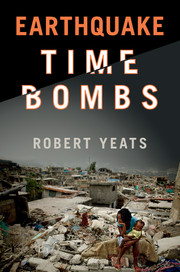Why this book?
Published online by Cambridge University Press: 05 November 2015
Summary
At the beginning of 2010, I was interviewed by Scientific American for a New Year's article on earthquakes. The interviewer, Katie Harmon, was well informed, and I enjoyed talking with her. I had just finished the Caribbean chapter of a book I had been writing for Cambridge University Press, Active Faults of the World, a chapter that had been fascinating to work on because Caribbean earthquake faults are so close to the United States, including my birthplace, Miami, Florida.
Somehow, the conversation turned to Port-au-Prince, the capital of Haiti, the poorest country in the Western Hemisphere. People have been moving to Port-au-Prince by the hundreds of thousands because that is where the jobs are, or appear to be. But the city lacks any social services, and there is no plan for where the new arrivals will live. So they are packed into the most abysmal slums, with shanties that are so fragile that it appeared a slight breeze would blow them down.
Port-au-Prince has a huge problem that is unrecognized by the government: It is adjacent to the Enriquillo plate-boundary earthquake fault, a structure that had not sustained a major earthquake near the city since the middle of the eighteenth century, prior to American (and Haitian) independence. I pointed out to Katie Harmon that Port-au-Prince is a time bomb. At the time of the previous earthquake, the city was a small town, but now it has a population in the millions, many living in dilapidated housing. If the Enriquillo fault ruptured, it would be a disaster of monumental proportions.
One week later, Port-au-Prince was destroyed by a large earthquake, killing more than 100,000 of its inhabitants.
Needless to say, Katie now had a major story, and she was on the phone immediately, asking breathlessly, “Did you predict the earthquake?”
“No, no, not at all,” I replied. In my book, I could point out where the dangerous faults are, and even how active they are, but I could not say when the next big earthquake would strike – tomorrow or a hundred years from now.
- Type
- Chapter
- Information
- Earthquake Time Bombs , pp. ix - xviPublisher: Cambridge University PressPrint publication year: 2015



